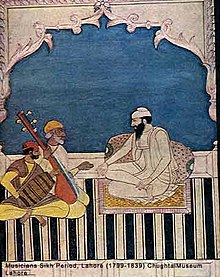BIHAGRA.
Raag Bihagra is a significant musical composition in Sikh musicology, featured in the Guru Granth Sahib. It is the 22nd raag in the sequence and spans pages 537 to 557. This raag is closely related to the modern Raag Bihag, and the resemblance between the two often poses challenges for performers in maintaining their distinctiveness.
The mood of Raag Bihagra is one of profound sadness and pain, which leads to a yearning for peace and understanding. It is designed to evoke heightened emotional states, channeling them toward the pursuit of truth and meaning. The prescribed ascending (Aroh) and descending (Avroh) note patterns, along with the primary (Vadi) and secondary (Samvadi) notes, create a unique melodic framework.
In Sikh tradition, Raag Bihagra is used to compose hymns that emphasize surrender to the divine will and the attainment of spiritual tranquility. Guru Ram Das, Guru Arjan, and Guru Tegh Bahadur contributed hymns, chhants, and a var to this raag, enriching its spiritual and musical significance.
A variant of Bihag popular in Kirtan and other Sikh devotional styles, used as the basis for compositions by great Gurus including Ram Das and Tegh Bahadur (some refer to the raga as ‘Punjabi Bihag’). As per Jawaddi Taksal, “Bihagara is very melodious, and brings out pangs of separation which can be removed by…becoming imbued with the shabad [holy verses]” – and. The basic Bihag framework is modified through the injection of Bilawal motions, with an Alhaiya-style double-Ni favoured over the usual double-Ma, amidst characteristic phrases such as GmP; NDP; DGmG. Also performed by Jaipur-Atrauli vocalists including Mallikarjun Mansur and Ashwini Bhide-Deshpande – and usually classed as a night raga. Also see the similarly Sikh-infused Bihagda, which adds Khamaj rather than Bilawal.



